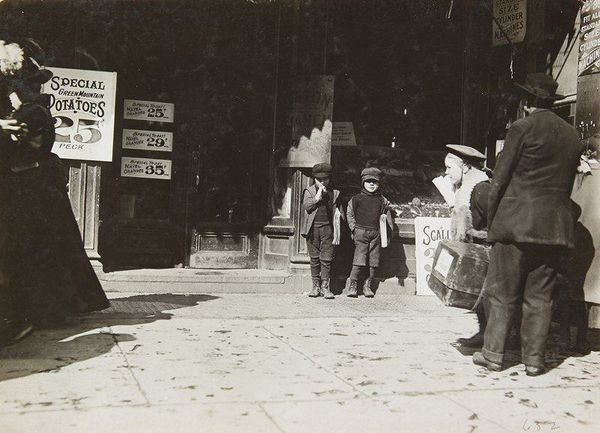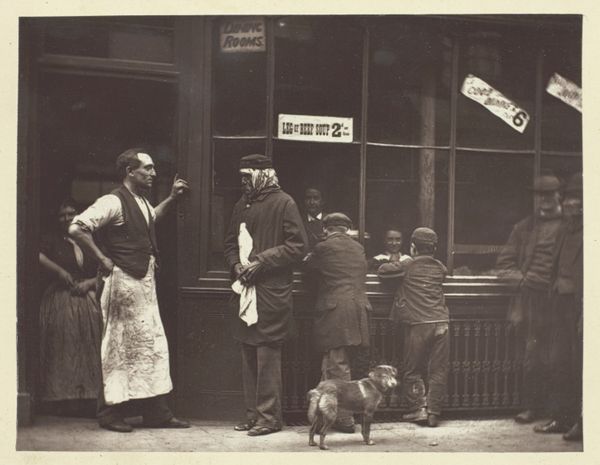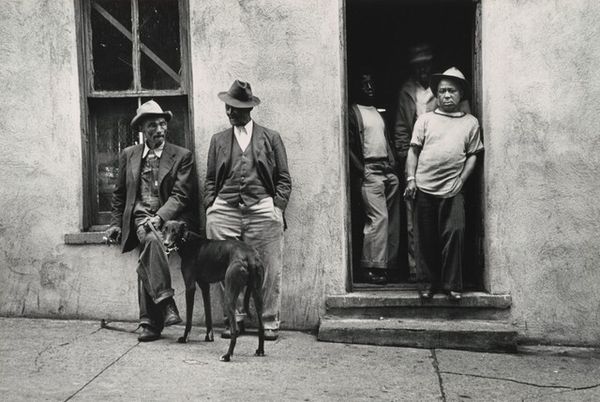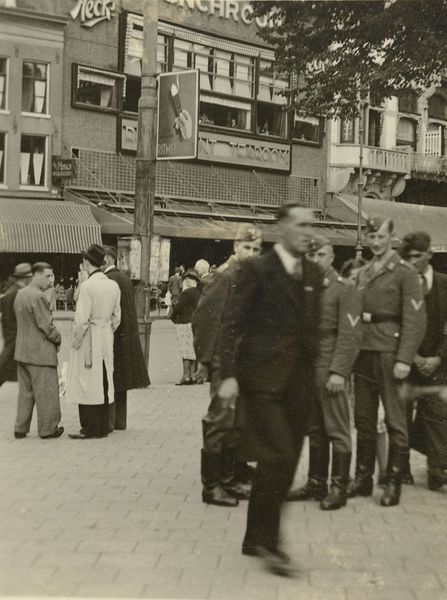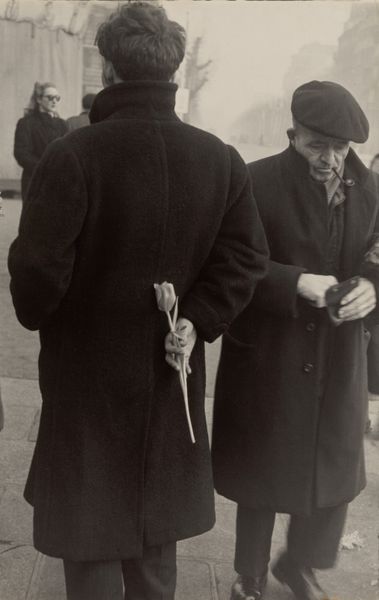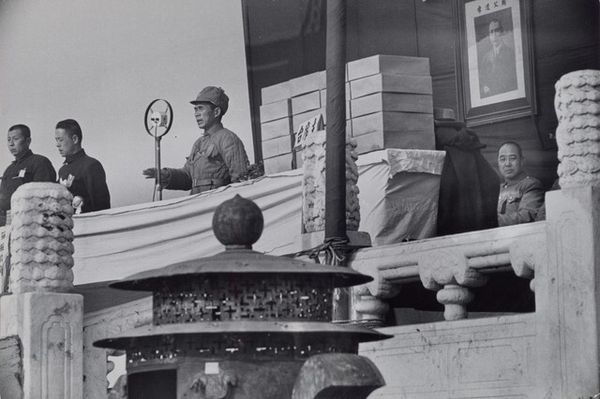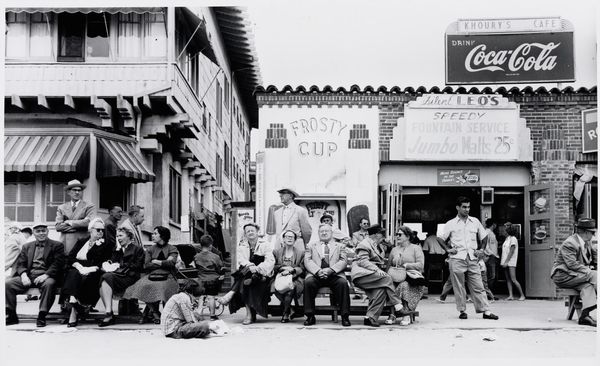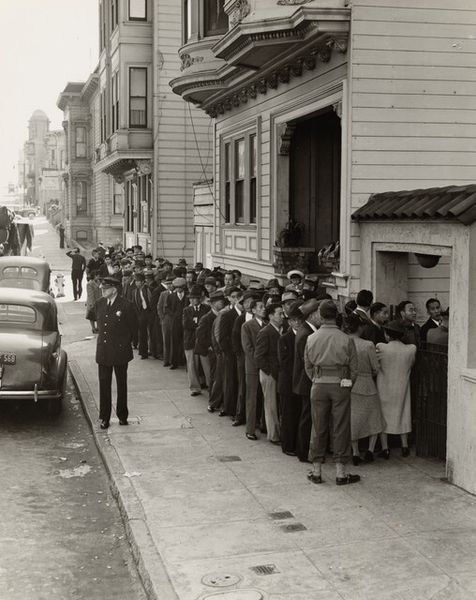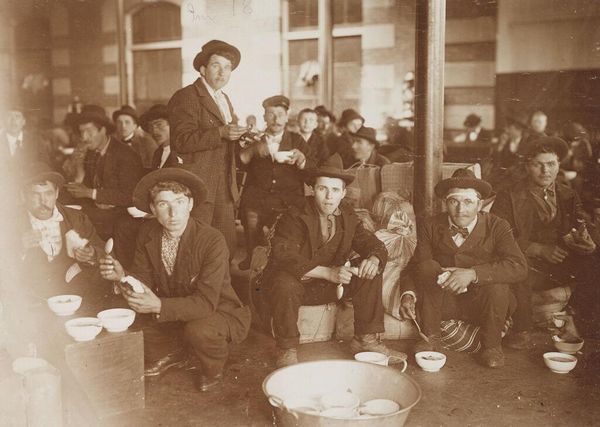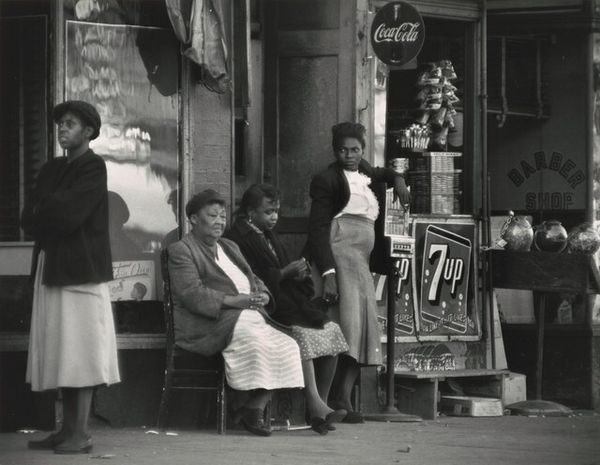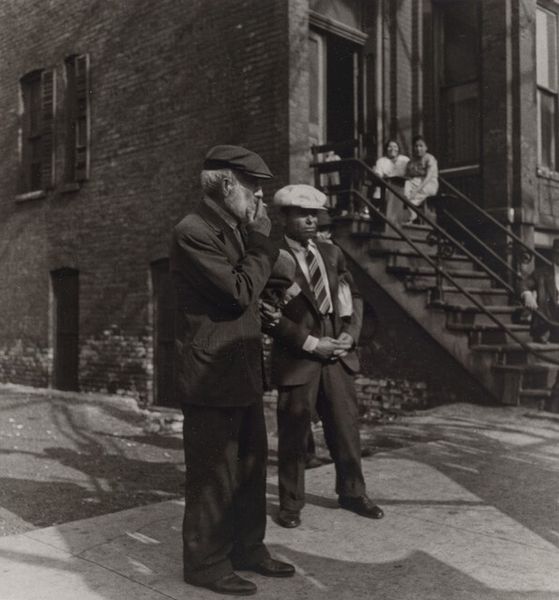
Dimensions: overall: 11.6 x 14.8 cm (4 9/16 x 5 13/16 in.)
Copyright: National Gallery of Art: CC0 1.0
Curator: This is "Place to Meet, Luzzara, Italy," a gelatin-silver print taken in 1953 by Paul Strand. It exemplifies Strand’s commitment to realism, portraying a group of people outside what appears to be a storefront. Editor: My first impression is one of stillness, and contemplation. The composition is divided in a rather stark manner, one side occupied by seated figures, the other, men poised to enter or exit a doorway. Despite the potential for dynamism, the greyscale palette and stoic expressions evoke a feeling of quietude. Curator: Observe how Strand uses tonality and form to structure the composition. The photograph's surface is treated with exquisite care, focusing the interplay between the light falling across the architectural setting and the shapes made by the people gathered in this public sphere. Notice also the linear precision that segments and aligns planes with the verticals. Editor: The scene seems to be charged with unspoken narratives, though. What do we know about the place Luzzara in Italy during this postwar time, for example? Are these figures a study in working-class communal life, waiting outside of shops due to limited domestic space or opportunities? Perhaps some gathering for simple conversation? Curator: I’m hesitant to prescribe so much context. If you consider Strand’s formal choices – the texture of the worn building façade, the posters creating a shallow depth of field – they create visual rhythms independent of external references. They invite appreciation based upon the picture elements, in and of themselves. Editor: And I want to also ask *who* is left out, right? I see mostly men represented here, and one older woman on the margins quietly focused on sewing. Is this exclusion merely descriptive of Italian village life in 1953 or is the lack of female representation also a conscious stylistic and social statement? Curator: We are then back to forms; notice, for example, how the subjects are organized along both sides, from left to right in each zone; the tonal value increasing gradually towards the dark aperture of the doorway as if receding into history. Editor: Yes, well, such visual strategies speak to themes that touch on how history and societal structures dictate ways of life. Thanks for highlighting how those tensions play out formally and representationally here.
Comments
No comments
Be the first to comment and join the conversation on the ultimate creative platform.
